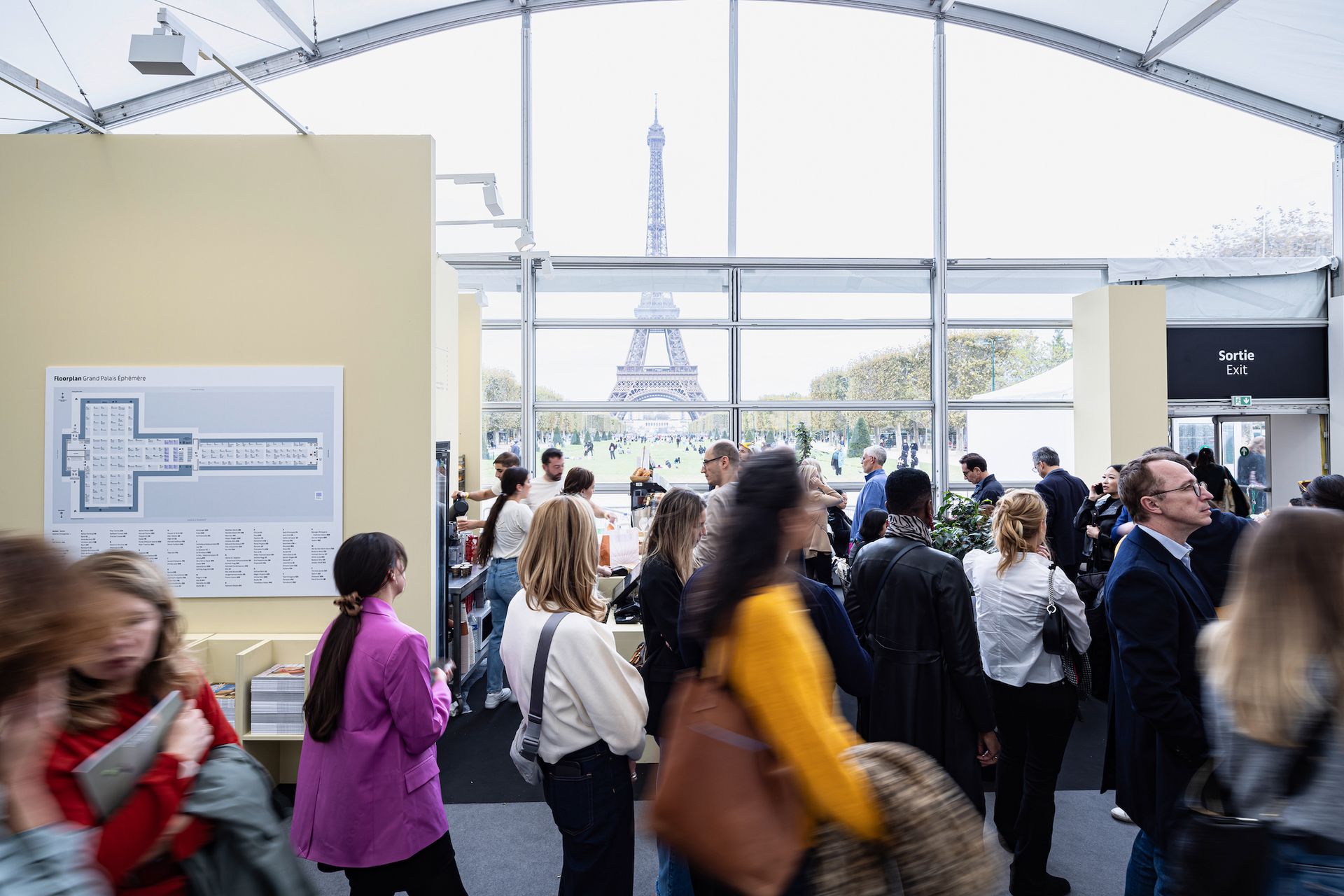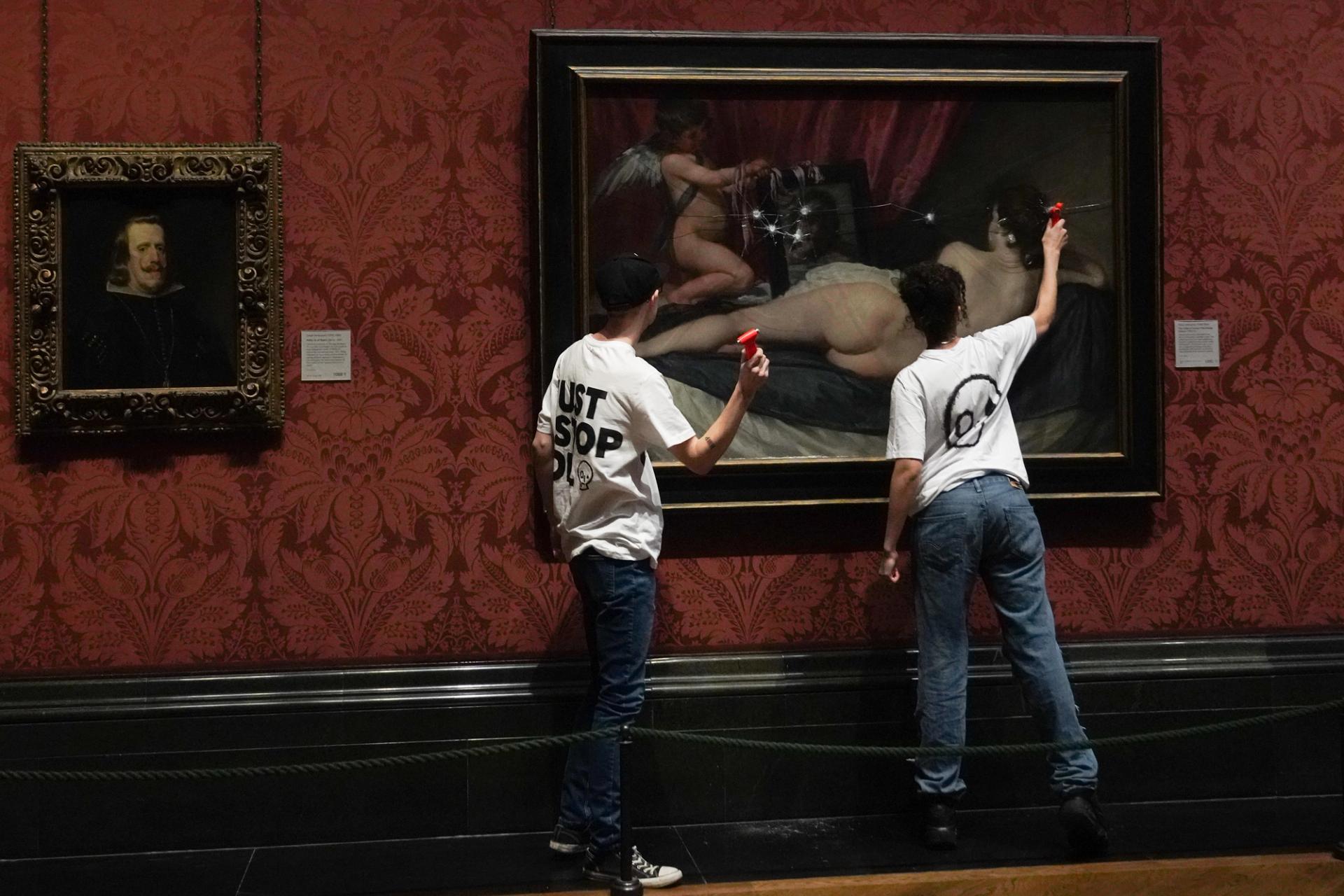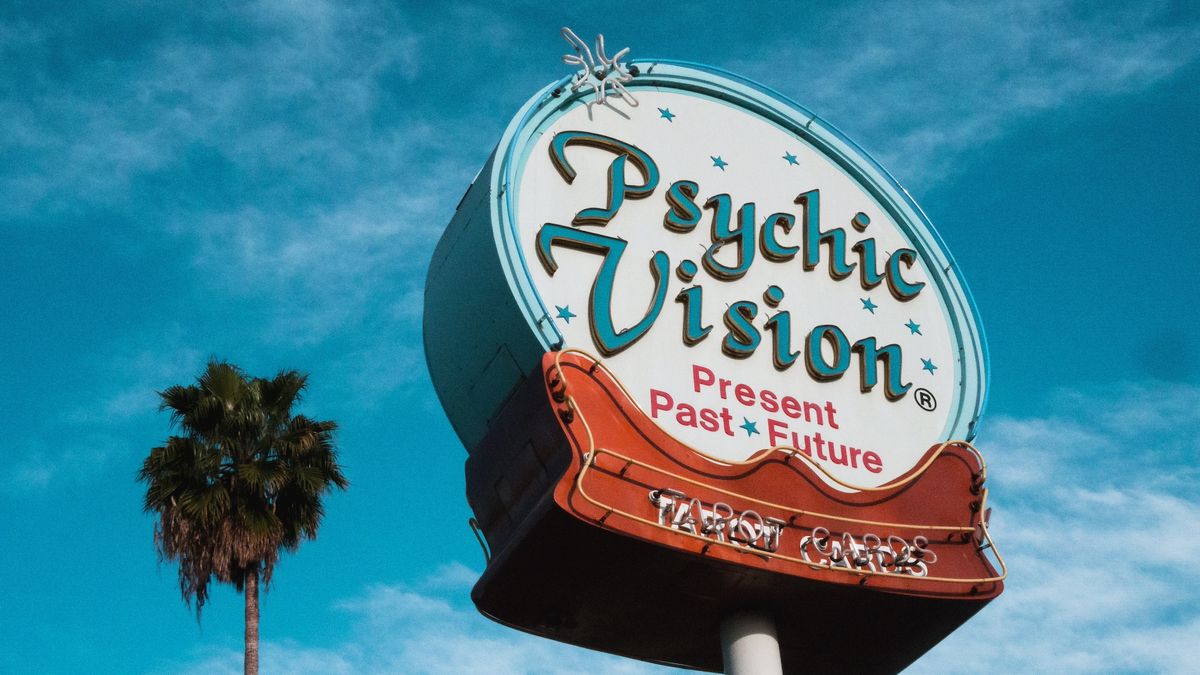Longtime readers of this column know that when the next year starts peeking over the horizon, it’s time for me to uncap my red pen and grade the art market predictions I made at the start of this one.
With eight prognostications spanning commercial galleries, auction houses, art fairs and more, we’ve got a lot of ground to cover in this edition—and with very little in the trade having gone the way most professionals hoped, it feels like a particularly important time for a pundit like me to be accountable.
So let’s get right into the review, shall we?
1. One or more high-end galleries will build out a department specialising in licensing and branded merchandise.
On review: Half right.
One reason I keep making and reviewing art market predictions is that sometimes I find out the industry is one step ahead of me. Case in point: none of Gagosian, Hauser & Wirth and White Cube had a dedicated licensing professional on staff as of my writing, according to spokespeople for each dealer, and an inquiry to David Zwirner went unanswered by publication time.
Pace Gallery, however, does have one—and has had him in the role since January 2020.
Vincent Wilcke, Pace’s senior researcher and permissions manager, “handles all licensing for Pace artists, including commercial”, a gallery spokesperson says. “He primarily deals with TV/ film and commercial books licensing, as that is what the bulk of our artists have requests for.”
So, I was right to think that a major gallery would conclude this area of the business had grown important (and lucrative) enough to hire a specialist to manage, but I was wrong to think that it would take until this year. As a result, the committee has decided to award me one half-point for this prediction. (Full disclosure: The committee is me. No one ever said this process was perfect!)
2. Auction sales of fine art in China and the UK will both plummet at least 5% year over year from 1 January to 1 December.
On review: Correct.
If you needed more proof that 2023 was a bummer for practically everyone in the art trade, consider this: according to data from ArtTactic, fine art sales at Christie’s, Sotheby’s and Phillips in London declined from about $1.41bn in 2022 to $1.14bn this year—a decrease of 18.8% by value.
In China, meanwhile, fine art sales dwindled from $921.7m in 2022 to $847.8m in 2023—a shrinkage of 8%—across the Hong Kong, Beijing and Shanghai salerooms of Christie’s, Sotheby’s, Phillips, China Guardian and Poly Auction.
3. AGP (the consortium of Acquavella, Gagosian and Pace) will outcompete the auction houses for at least one collection of note.
On review: Dead wrong.
I missed the mark on this prediction, but I can’t fault the process that led me to make it.
A large number of works with estimates of $10m or more hammered at or below their targets at auction in 2022—that is, when they managed to sell at all—and much the same held true at this lofty price level in 2023 (including during offerings of major single-owner collections).
In fact, the fears about the market’s wobbliness proved to be even more severe than I anticipated last December. Christie’s, for instance, estimates that its global auction sales of art and luxury goods will have plummeted nearly 31% by year’s end, from $7.2bn in 2022 to about $5.0bn in 2023. Private sales of the same categories, in contrast, were up about 5% year-on-year, to $1.2bn.

Arguably the most coveted private collection to come up for sale in 2023, that of the late Whitney Museum patron Emily Fisher Landau, was consigned to Sotheby's and sold during the marquee autumn sales Courtesy Sotheby's
In theory, this scenario went a long way toward levelling the playing field between the auction houses’ private sales departments and the combined might of these three A-list commercial galleries. In practice, however, no collectors or estate executors felt compelled enough by the new topography of the market to follow the path of the Donald Marron collection. C’est la vie. Which leads us to…
4. Fiac will permanently shut down.
On review: All signs say oui.
I should state that I cannot officially confirm Fiac is done and dusted. RX France, the fair’s organiser, did not reply to my email enquiring about Fiac’s status heading into the new year. But the facts as we know them today make it hard to come to any other conclusion.
After Art Basel displaced Fiac from its longtime October slot at the Grand Palais in January 2022, RX France sabre-rattled about suing the Réunion des Musées Nationaux-Grand Palais (RMN-GP), the entity that manages tenancy at the Grand Palais and Grand Palais Éphémère, and vowed its homegrown Parisian fair would continue.
Yet no lawsuit has materialised to date, and RX France never hired a dedicated director for Fiac after the ouster. Instead, the company assigned Florence Bourgeois, the director of its other domestic expo, Paris Photo, the ostensible responsibility of managing both events.
Although Bourgeois stated in an October 2022 interview that the company was “reflecting on different ways to bring [Fiac] back to life”, there has been no sign of movement on the operating table in the succeeding 14 months. In fact, searching for art events in Paris on RX Global’s “events finder” tool as of mid-December 2023 returned only one result: Paris Photo.

Visitors during the VIP preview of the 2023 edition of the Paris+ by Art Basel fair Courtesy of Paris+ par Art Basel
Meanwhile, Paris+ par Art Basel has earned rave reviews in its first two years at its temporary venue, with a major scale-up looming when the fair transitions to the freshly renovated Grand Palais for its third edition in 2024. The city’s simultaneous satellite fairs, including Paris Internationale, Asia Now and Offscreen, also leave little breathing room for an insurgent Fiac to return during Paris’s premier art week. Nor do I have any confidence that Fiac would attract a sustainable level of demand from either dealers or collectors at another point in the annual calendar.
In short, after Fiac’s second consecutive year of dormancy, the most generous reading is that it has become a zombie fair: maybe not officially dead, but certainly not genuinely alive, either. Under the circumstances, that seems like enough evidence to put a checkmark on this prediction.
5. From January through June, total auction sales of works by ultra-contemporary artists (born in 1975 or later) will decline year-over-year for the first time since 2019.
On review: Yessir.
Per data from ArtTactic, in the first half of this year, lots by ultra-contemporary artists amassed $151.9m at Christie’s, Sotheby’s and Phillips’s salerooms in London, New York, Hong Kong, Paris, Milan, Shanghai and Singapore combined. This represents a drop of nearly one-third from the equivalent period in 2022, when works by artists in this age bracket brought $221.2m across the same venues.
One caveat bears mentioning: Although the dollar value of such sales significantly declined year-on-year, the auction houses actually sold 21.4% more ultra-contemporary lots by volume from January through June of this year (1,332) than during the same period a year earlier (1,097). So, the bidding wars didn’t materialise at the same rate, but demand for the youngsters remains healthier than the typical talking points about a “retreat to quality” would suggest.
6. Christie’s, Sotheby’s and Phillips will generate a combined minimum of $1.5m in primary-market sales (excluding NFTs).
On review: Accurate.
Even though I hit the bullseye here, the arrow didn’t travel the path I expected. Christie’s did not respond to my inquiry about primary-market sales. Sotheby’s, whose Artist’s Choice initiative saw the house partner with ascendant living artists and their dealers to auction off fresh-from-the-studio works with a charitable component in 2022, declined to provide data as well.
Phillips, however, delivered more than $4m in primary-market sales this year, according to an auction house spokesperson. The earnings came from a combination of six private selling exhibitions and five entries on its nascent DropShop platform, where Phillips offers one newly commissioned limited-edition print or sculptural multiple by a different artist every month.
So far, Dropshop has featured contributions from reliable draws including Kehinde Wiley, the estate of Jean-Michel Basquiat and the in-demand ultra-contemporary artist Emily Mae Smith. In contrast, the only artists to receive solo selling shows from Phillips this year were LA-based Brett Crawford, whose street art-adjacent style has developed a major following in East Asia, and Sassan Behnam-Bakhtiar, a French-Iranian abstract painter whose CV largely consists of exhibitions at auction houses.
The remaining private selling exhibitions at Phillips in 2023 were all group affairs. It just goes to show you that the best business is not always done with the most established talent.
(One note for the detail-specific: although Damien Hirst held a show of 102 new paintings at Phillips in London this summer, all transactions were carried out through HENI Primary, meaning they do not factor into the Phillips data.)
7. Climate protesters will damage one or more institutional works badly enough to require multi-day conservation—or worse.
On review: Sadly, correct.
On 6 November 2023, two members of Just Stop Oil, an activist group seeking to pressure the UK government into ending its licensing of new fossil fuel projects, entered London’s National Gallery and smashed hammers into the glass protecting Diego Velázquez's The Toilet of Venus (1647-51). The institution removed the work, widely known as “The Rokeby Venus”, from view for nearly a month following the incident; it returned on 1 December “after conservation treatment to minor damage sustained to the painting surface, and the fitting of new glazing”, according to a press statement from the National Gallery.

Climate protesters attack The Toilet of Venus (1647-51), also known as “The Rokeby Venus”, by Diego Velázquez, at London's National Gallery on 6 November 2023 Photo: Kristian Buus/In Pictures via Getty Images
I would love to tell you the withering backlash against this latest provocation will compel climate action groups to re-evaluate their misguided campaign of vandalising great works of art. But I doubt it, even though this is clearly a losing issue for the protesters—less because the average person believes art is sacrosanct and more because almost no one understands the conceptual link the protesters are trying to hammer home.
8. AI image generators will become the subject of a class action lawsuit, a formal inquiry by lawmakers or both.
On review: True.
No prediction I’ve ever made has been validated faster than this one.
On 13 January 2023, a trio of US-based artists and illustrators—Sarah Andersen, Kelly McKernan and Karla Ortiz—filed a class action lawsuit in the Northern District of California against three artificial intelligence (AI) companies. The complaint accused Midjourney, DeviantArt and Stability AI (along with its UK affiliate) of copyright infringement via the unauthorised use of the plaintiffs’ works in the gargantuan databases of images used to “train” their algorithmic image generators (Midjourney, DreamUp and Stable Diffusion, respectively).
The lawsuit has travelled a winding road in the months since. On 30 October, a federal judge dismissed much of the original complaint, primarily on two grounds: first, that only one of the three plaintiffs had previously registered their works with the US Copyright Office, and second, that the lawsuit failed to adequately explain how the AI companies had used the artists’ imagery in their software and violated their rights in the process.
But an amended complaint filed in November added seven plaintiffs, one defendant (Runway AI, which contributed to the development of Stable Diffusion 1.5) and hundreds of pages of exhibits that aim to fill in the blanks cited in the judge’s partial dismissal the month before.
So, the winner of the legal dispute is still in question. The legitimacy of this prediction, however, is not.
Overall, that leaves me with the best score I’ve rung up in nearly a decade of doing this exercise—a fittingly counter-intuitive result for an expectation-upending year.
Final score: 6.5 Correct, 1.5 Incorrect.
- Watch this space—or pick up a copy of our January issue—to see my predictions for the art market in 2024.



